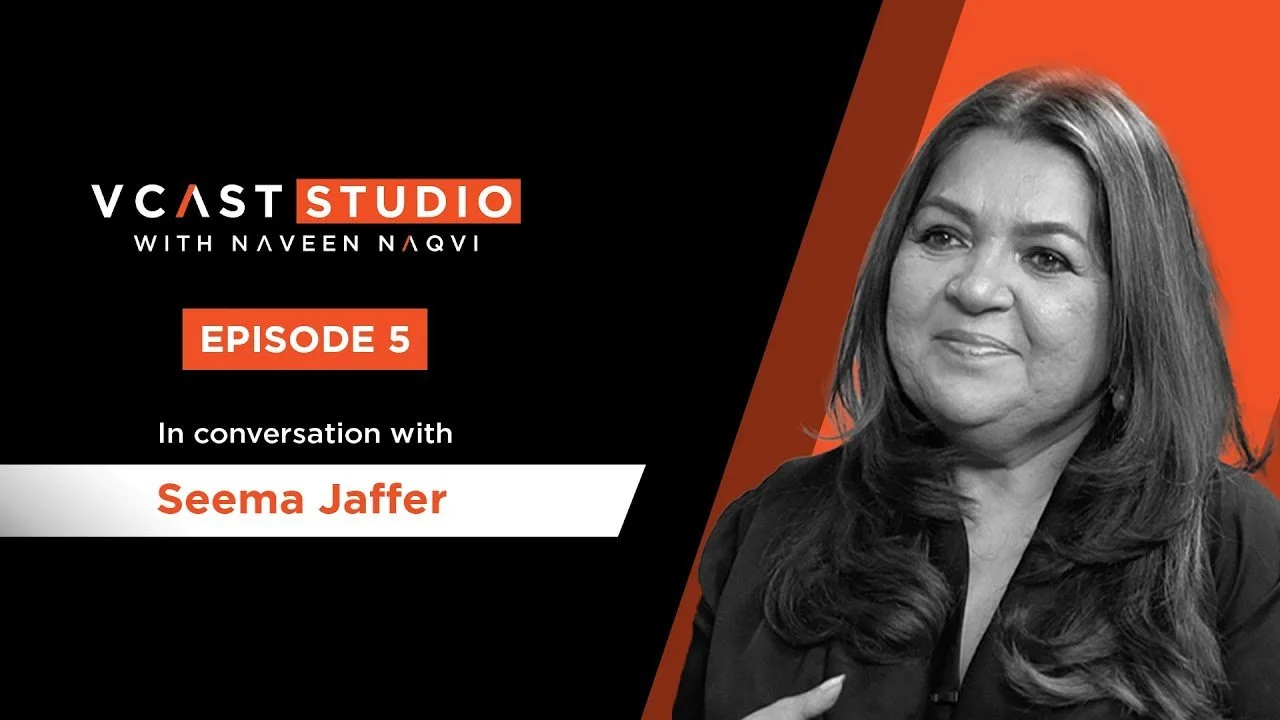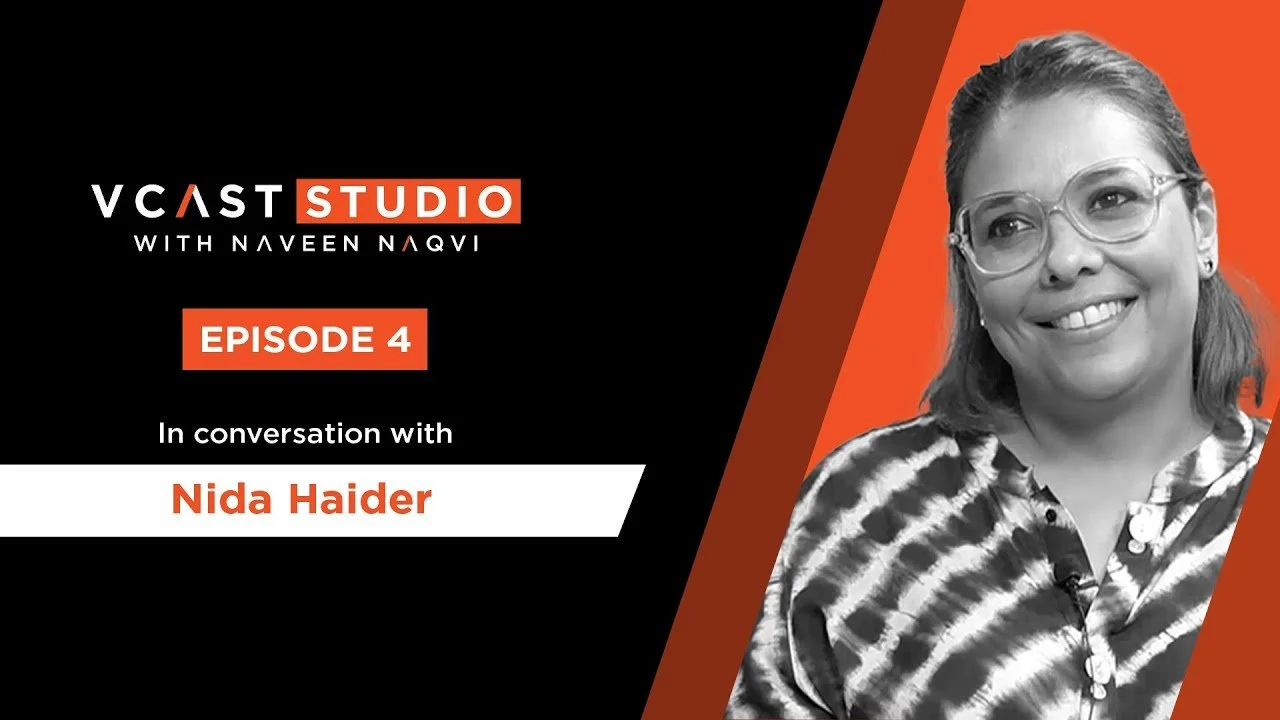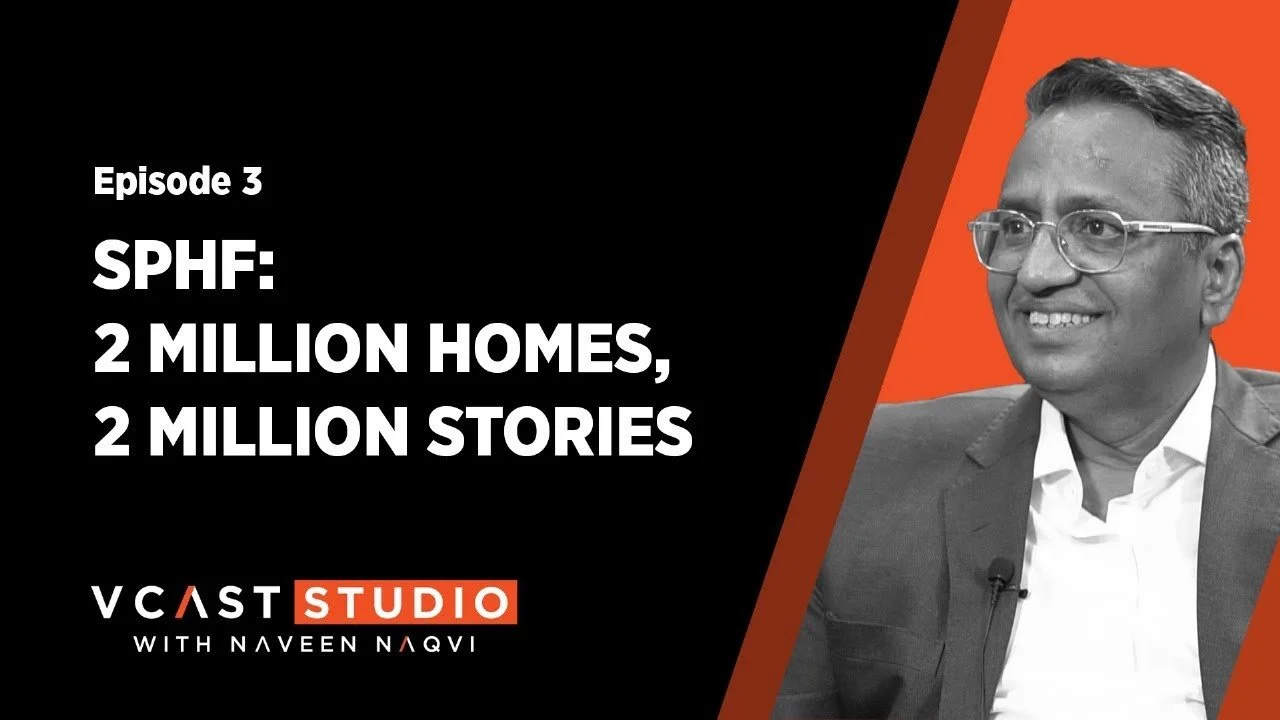VCast Studio - Episode 3 | Khalid Mehmood Shaikh
“People who once lived in mud homes are now legal homeowners with tangible, appreciating assets. This is not just reconstruction, it’s empowerment,” says Khalid Mahmood Shaikh, CEO of the Sindh People’s Housing for Flood Affectees (SPHF).
In this episode of VCast Studio, Shaikh outlines the vision behind what he describes as the world’s largest rehabilitation housing initiative. Following the catastrophic floods of July–August 2022 that submerged large parts of Sindh and displaced millions, the Government of Sindh acted swiftly, not only to conduct rescue operations but also to initiate long-term rehabilitation efforts.
This vision gave birth to SPHF, an ambitious program to construct 2.1 million houses for families who lost everything.
Established in November 2022 under Section 42 of the Securities and Exchange Commission of Pakistan (SECP), SPHF was designed to function with the agility of a private-sector organisation while maintaining public oversight. The initiative was launched under the leadership of Chief Minister of Sindh, Murad Ali Shah and Chairman of Pakistan People's Party, Bilawal Bhutto Zardari to provide safety, stability, and renewed hope for families once vulnerable to rain, homelessness, and despair. Shaikh says that by avoiding delays common in traditional bureaucratic systems, SPHF reflects Sindh’s openness to innovation and its growing success in public-private partnerships (PPPs).
He describes these partnerships as a "complex marriage." While the private sector prioritizes profit over social value and the public sector often lacks long-term vision, their combined efforts can leverage each other’s strengths. Shaikh explains that success comes when the public sector engages the private sector to develop infrastructure, ensure long-term maintenance, and pay penalties for any failures. He highlights the Malir Expressway project as another example of a successful PPP. With the first phase inaugurated in January 2025, the expressway is easing traffic on the DHA side and Shahrah-e-Faisal corridor and also aims to improve connectivity to interior Sindh.
Zooming into SPHF, Shaikh explains that a key part of the project is its digitally enabled Monitoring and Information System (MIS), which tracks every stage—from assessment to construction—in real time. Top officials can access this data, while centralised bank accounts ensure all payments are streamlined, transparent, and auditable.
To boost transparency and engagement, SPHF has also launched a donation portal, enabling individuals—especially overseas Pakistanis—to support specific areas or families. Donors receive photo updates at each construction stage. With village-level digital mapping, both individuals and companies can fund entire communities and monitor their progress. Shaikh sees this monitoring capability as a strong potential driver of corporate social responsibility and lasting impact.
He adds that strict accountability measures are in place, including internal audits by global firms like KPMG and PwC as well as the involvement of multiple independent NGOs as implementation partners—building both public trust and international credibility.
This credibility, in turn, has helped secure major international support, including $500 million from the World Bank, €200 million from the Islamic Development Bank, and $400 million from the Asian Development Bank.
He further explains that each Rs. 300,000 house, when paired with formal land titles, appreciates to nearly Rs. 1 million. He highlights that multiplying this by 2.1 million households results in Rs. 2 trillion worth of assets created and transferred directly into the hands of the people.
Once beneficiaries receive funding, land rights, and technical support from the Sindh Government, they manage their construction with impressive efficiency, creativity, and a strong sense of ownership despite their modest income. Shaikh notes how many beneficiaries look forward to enjoying the rain for the very first time in their new homes.
“We are not just building houses, we are actually creating stories, because every home has its own story.”
Shaikh mentions that in all his years of bureaucratic service, the government has never truly looked people in the eye, but through SPHF they have. While SPHF started purely as a housing project, they realized the need to incorporate critical services such as water, sanitation, and hygiene (WASH), and rural infrastructure development. Operating across 50,000 villages and impacting nearly 15 million people, the initiative is described by Shaikh as equivalent to building a new country within the province.
Quoting a study supported by the International Labour Organization (ILO), he notes that the SPHF project is expected to generate 1 million jobs over two years, providing stable incomes, essential skills, and the dignity of contributing to the national recovery effort.
SPHF is also supporting financial literacy among its beneficiaries. 2.1 million people—many of whom have never been to a bank in their lives—are opening bank accounts, and 800,000 of them are women. Already, 250,000 to 300,000 of these women have opened their accounts and built their homes.
Shaikh also points to the SPHF framework as a globally relevant model. Centered on transparency, digital monitoring, and community empowerment, the initiative offers a practical model for post-crisis reconstruction in war-torn or disaster-hit regions.
“This project can easily be replicated in Ukraine, Yemen, Gaza, and Syria; wherever there’s been a mass destruction of houses.”
He concludes that SPHF is more than just a housing initiative—it represents a reimagining of governance and resilience, where technology, accountability, and compassion come together to restore dignity and create empowered communities. His call to action is for sustained dialogue and collaboration between the public and private sectors as well as between federal and provincial governments across Pakistan—to adopt good ideas wherever they exist and appreciate each other’s success.
Could the public-private partnership model spark a new era of sustainable development around the world? Share your thoughts below.
This article was developed with the assistance of AI tools.




